Ah, the joys of air travel! The thrill of security lines, the agony of delayed flights, and the sheer excitement of wondering if your shampoo will make it through the TSA gauntlet unscathed. But fear not, dear traveler, for we’re about to demystify the often-baffling world of Transportation Security Administration regulations. From the obscure to the obvious, we’ve got the scoop on the 8 TSA rules you need to know to avoid those pesky pat-downs and make your airport experience a whole lot smoother. So, buckle up (or should we say, belt up?) and let’s dive in!
Liquids and Gels

Before you start packing your carry-on bag, it’s imperative to understand the TSA’s rules regarding liquids and gels. You don’t want to be that person who has to surrender their favorite shampoo or face cream at security, do you?
The 3-1-1 Rule
Any liquids, gels, or aerosols you bring must adhere to the 3-1-1 rule: 3 ounces or less per container, in a 1-quart bag, with 1 bag per passenger. This means you can bring multiple 3-ounce containers, as long as they fit in that 1-quart bag. Easy peasy, right?
Exceptions for Medications and Baby Formula
The good news is that medications, baby formula, and breast milk are exempt from the 3-1-1 rule. You can bring these items in reasonable quantities, but be prepared to declare them at security.
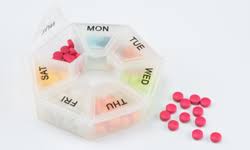
To make things smoother, consider keeping your medications in their original packaging, along with any prescription labels or documentation. For baby formula or breast milk, you may be asked to taste or test them, so be prepared for that. Don’t worry, it’s just a standard procedure to ensure everyone’s safety. And hey, who doesn’t love a good formula-tasting party at the airport?
Electronics and Batteries
One of the most frustrating things about traveling is dealing with the Transportation Security Administration’s (TSA) rules and regulations. But don’t worry, we’ve got you covered! Concerning electronics and batteries, there are a few things you should know to avoid any hassle at security checkpoints.
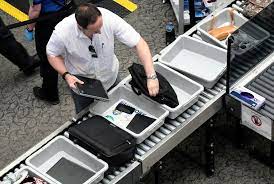
Laptop and Tablet Rules
An important thing to remember is that laptops and tablets must be removed from your carry-on bag and placed in a bin for X-ray screening. Make sure you’re prepared to do this quickly and efficiently, as you don’t want to hold up the line behind you. Also, be aware that some airports may have different rules for larger electronic devices, so it’s always a good idea to check with your airline beforehand.
Battery Safety Guidelines
Any spare lithium batteries you’re carrying should be protected from accidental activation and must be carried in your carry-on bag. This means you should tape the terminal ends or place them in a protective case to prevent them from coming into contact with other objects.
With lithium batteries being a fire hazard, it’s crucial to follow the TSA’s guidelines to ensure everyone’s safety on the plane. You should also be aware that there are limits to the number of spare batteries you can carry, so be sure to check the TSA’s website for the most up-to-date information. By following these simple rules, you’ll be able to enjoy your electronic devices during the flight without any issues.
Clothing and Accessories
There’s more to preparing for a TSA screening than just packing your bags – you also need to consider what you’re wearing. Yes, really! From shoes to jewelry, certain items can trigger additional screening or even slow you down. Shop Here: Travel Resources
Shoes and Belts
Sneakers, boots, or sandals – it doesn’t matter what’s on your feet, but it does matter what’s inside them. Make sure to remove any electronic devices, batteries, or loose change from your shoes before passing through security. And, yes, that means taking off your belt too (unless it’s a TSA-approved one).
Jewelry and Metal Detectors

On your way to the security checkpoint, take a quick glance at your jewelry – is it likely to set off the metal detector? If so, consider removing it beforehand to avoid any delays. This includes chunky watches, layered necklaces, and anything with metal clasps.
A good rule of thumb is to keep your jewelry simple and understated when flying. You don’t want to be “that person” who holds up the entire security line because your blinged-out necklace won’t pass muster. And trust us, you don’t want to have to explain to the TSA agent why you’re wearing a metal-studded belt buckle shaped like a snake – just leave it at home, okay?
Food and Drinks
When considering food and drinks, the TSA has some specific rules to keep in mind. You don’t want to get stuck with a confiscated snack or a delayed flight due to a misunderstanding.
Snacks and Meals on Flights
The good news is that most snacks and meals served on flights are TSA-compliant. However, it’s always a good idea to check with your airline beforehand to see what’s allowed and what’s not. You might be surprised at what’s considered a “liquid” – yes, that includes peanut butter and jam!
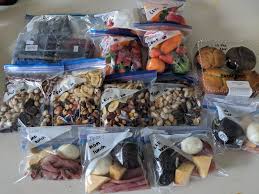
Bringing Your Own Food
Food for thought: if you’re planning to bring your own snacks or meals on board, make sure they’re in their original packaging or wrapped in a clear, plastic bag. This will help the TSA agents inspect your goodies more easily.
Flights can be unpredictable, and you never know when you’ll need a little pick-me-up. If you’re planning to bring your own food, just remember to follow the 3-1-1 liquids rule: 3 ounces or less per container, in a 1-quart bag, with 1 bag per passenger. And don’t even think about trying to sneak in that leftover pizza from last night’s dinner – solid foods are generally okay, but gels, liquids, and aerosols are subject to the 3-1-1 rule. So, go ahead and pack those energy bars, nuts, or dried fruits, but leave the soup and yogurt at home.
Travel Documents
Now, let’s talk about the most vital items you’ll need to get through security: your travel documents. Make sure you have these in order to avoid any last-minute stress or, worse, being denied boarding.
ID Requirements
Requirements for identification are pretty straightforward. You’ll need a valid government-issued photo ID, such as a driver’s license or state ID, to fly within the United States. If you’re traveling internationally, you’ll need a valid passport. And, yes, it’s a good idea to make sure your ID isn’t expired – you don’t want to find out at the gate that your license is no longer valid!
Visa and Passport Rules
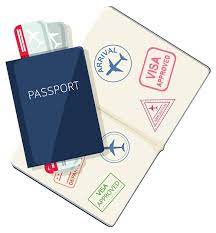
Visa requirements vary depending on your destination and citizenship. Check the U.S. Department of State’s website to see if you need a visa for your trip. And, of course, make sure your passport is valid for at least six months beyond your return date.
This might seem obvious, but it’s surprising how many people show up at the airport without the necessary documents. Don’t be that person! Double-check your visa and passport requirements before your trip, and make sure you have all the necessary documents in your carry-on. Trust us, you don’t want to be stuck at the airport trying to sort out a visa issue. Take the time to get it right, and you’ll be sipping margaritas on the beach in no time.
Prohibited Items
When packing for your trip, it’s important to know what items are not allowed in your carry-on or checked luggage. You don’t want to be that person who holds up the security line because you forgot to check the TSA’s prohibited items list.
Sharp Objects and Weapons
The TSA has a strict policy when it comes to sharp objects and weapons. You can’t bring anything that could be used as a weapon, such as knives, swords, or martial arts equipment, in your carry-on luggage. This includes scissors with blades longer than 4 inches, razors, and box cutters. If you need to bring any of these items, make sure to pack them in your checked luggage.
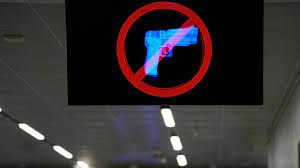
Firearms and Ammunition
On a related note, firearms and ammunition are heavily regulated by the TSA. You can bring firearms in your checked luggage, but they must be declared and packed according to the TSA’s guidelines.
Firearms, specifically, must be unloaded and packed in a hard-sided case. You’ll also need to declare your firearm at the check-in counter and fill out a declaration form. Additionally, you should check with your airline for their specific policies on traveling with firearms, as some may have additional requirements or restrictions. Don’t worry, you won’t be asked to surrender your weapon at the gate, but it’s always better to be safe than sorry (and delayed)!
To wrap up
The next time you’re scrambling to remove your laptop from your bag or wondering if you can sneak that extra tube of toothpaste onto the plane, remember: the TSA is always watching (not in a creepy way, though). By familiarizing yourself with these 8 necessary rules, you’ll be well on your way to becoming a security-line ninja, effortlessly gliding through checkpoints while your fellow travelers are stuck in a sea of confusion. So, go ahead, pack those shoes, and let your travels be stress-free (or at least, TSA-rule-free)! Go here for more info: https://www.tsa.gov/

